#Der Raupen wunderbare Verwandelung und sonderbare Blumen-Nahrung
Explore tagged Tumblr posts
Text
Maria Sibylla Merian was born #OTD (German, 2 Apr 1647 – 13 Jan 1717).
Here are a few of her works that were recently on display at the “Making Her Mark: A History of Women Art in Europe, 1400-1800” exhibition at Baltimore Museum of Art :


1. “Pineapple with Cockroaches” in Dissertatio de Generatione et Metamorphosibus Insectorum Surinamensium... (Dissertation on the generations and metamorphosis of Surinamese insects), 1719
Bound volume of hand-colored engravings and etchings
“This ripening pineapple's sweet aroma attracts a swarm of cockroaches. Maria Sibylla Merian observed this interaction during a three-year, self-financed voyage with her daughter Dorothea Maria to the South American country of Suriname, then a Dutch colony, in 1699. While there, Merian studied the native plant and insect life, learning their uses and behavior from enslaved African and Indigenous guides working at the sugar plantation where she stayed. In her notes, Merian characterized the pineapple as "the most outstanding of all edible fruits" and cockroaches as "the most infamous of all insects in America."
Merian's illustrations innovatively presented insect life cycles, habitats, and the broader ecological dynamic. After returning to the Netherlands, Merian published an illustrated compilation, creating one of the most important natural history publications of the time.
Her daughters Dorothea Maria Graff and Johanna Helena Herolt-Graff continued to issue editions after Merian's death, such as this deluxe version, contributing to their mother's foundational reputation in entomology.”

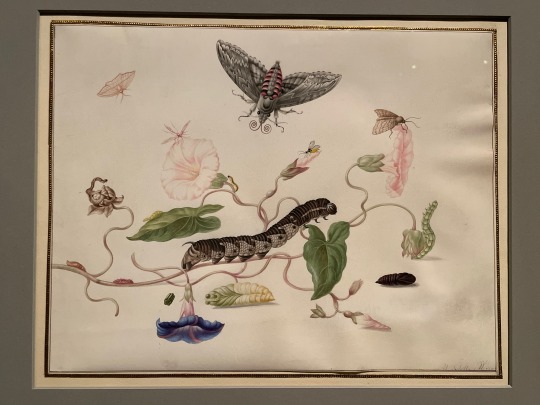
2. Frontispiece of Der Raupen wunderbare Verwandelung und sonderbare Blumen-Nahrung (The Wondrous Transformation of Caterpillars and their Curious Diet of Flowers), 1679-83
Bound volume w/ hand colored engraved illustrations
3. Convolvulus and Metamorphosis of the Convolvulus Hawk Moth, c.1670-1683
Watercolor w/ touches of opaque watercolor over indications in black chalk or graphite on vellum
“Maria Sibylla Merian had a close relationship with caterpillars, rearing them from egg to adult in her home over a decade. This engaging illustration of the life cycle of the convolvulus hawk moth on the wall above is the result of her sustained observations and her exceptional artistic talent. Creating an intertwined vignette of insect and plant life, Merian constructed a life cycle image that became a standard in scientific illustration and shaped the field of entomology. Her findings and illustrations contributed to a foundational reference text on insect metamorphosis, Der Raupen wunderbare Verwandlung und sonderbare Blumen-Nahrung, on display here.”
#animals in art#european art#museum visit#exhibition#Baltimore Museum of Art#Maria Sibylla Merian#women artists#women in science#women in STEM#book plate#frontispiece#watercolor#scientific illustration#natural history art#entomology#botany#caterpillars#butterflies#moths#lepidoptera#17th century art#metamorphosis#colonial art
13 notes
·
View notes
Photo

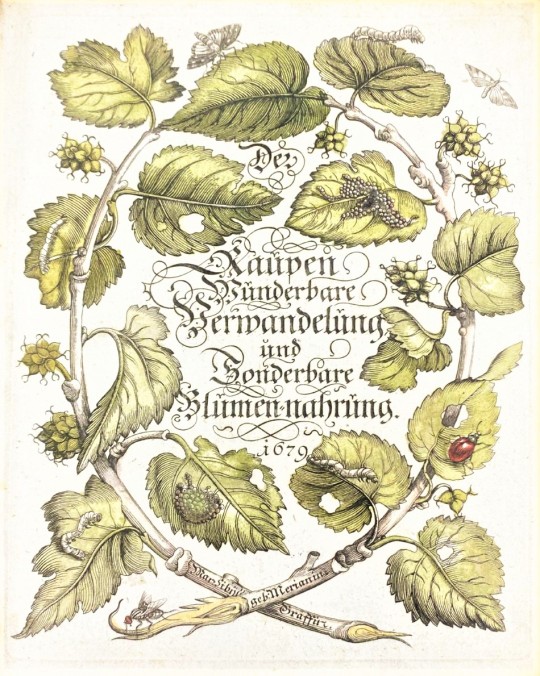
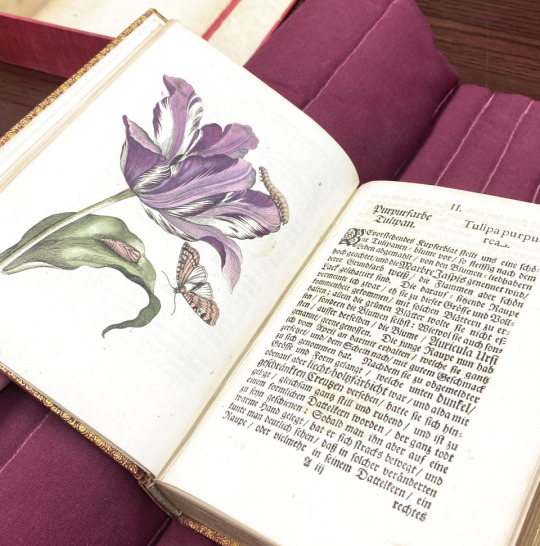
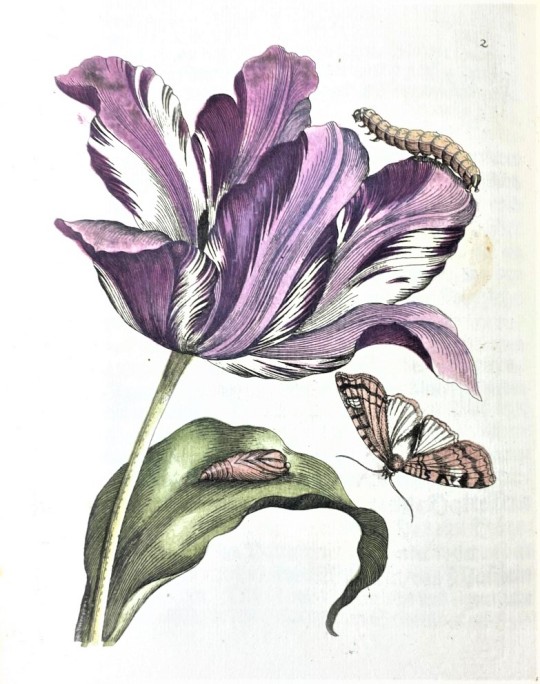
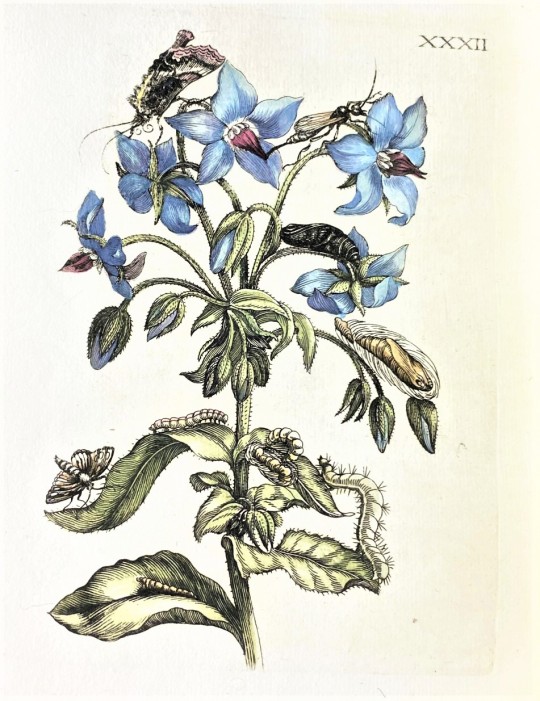
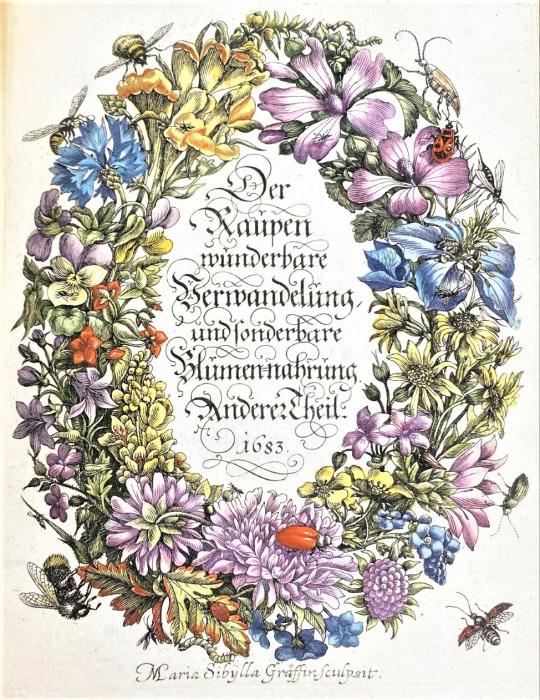
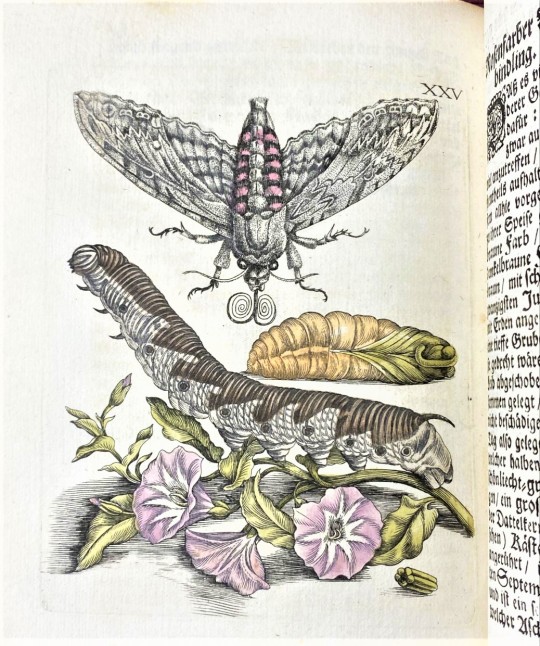
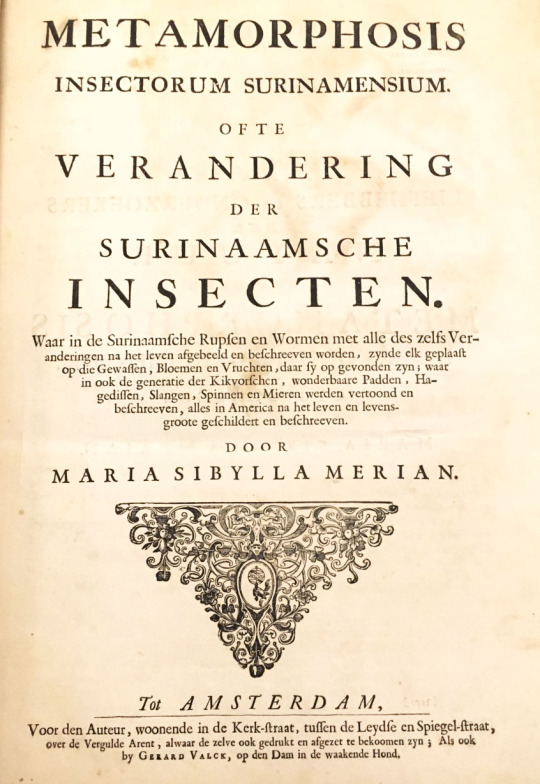
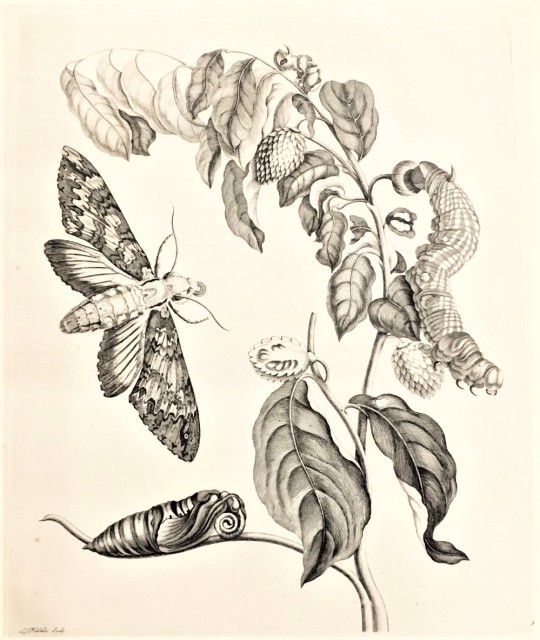
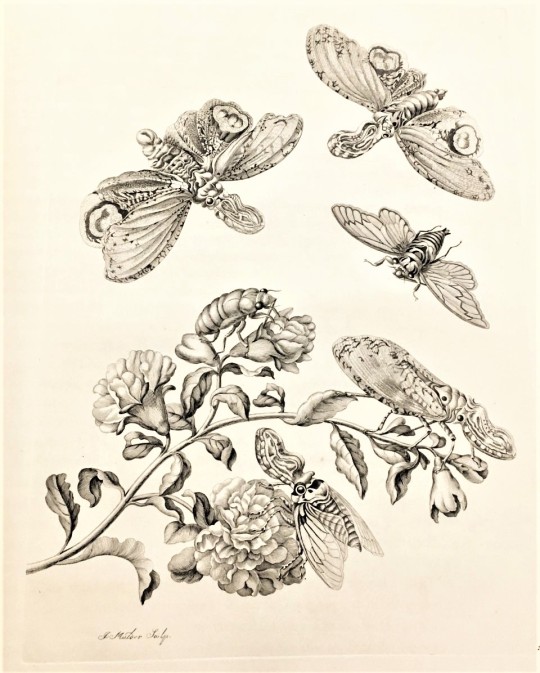
The Spectacle of Nature: Maria Sibylla Merian’s Insects
This week we are highlighting German-born naturalist and artist Maria Sibylla Merian (1647-1717) whose direct observations of insects led to new insights about metamorphosis. Merian was born in Frankfurt to an artistic family. Her father was Mathias Merian, a prominent publisher and artist who died in 1650 when Maria was 3 years old. A year later, Maria’s mother Johanna Sybilla Heyne remarried Jacob Marrel, a still life painter, who encouraged Maria’s artistic pursuits and taught her copperplate engraving alongside his male pupils. Throughout her life, Maria was fascinated by insects. She would study caterpillars and document their life cycles through drawings. When Maria was 18 years old, she married Johann Graffe, a former apprentice of her stepfather. They moved to Nuremberg and had two daughters, Johanna Helena and Dorothea Maria.
While in Nuremberg, Maria Sibylla Merian made money by selling watercolors and giving artistic lessons in embroidery and painting to wealthy young women. Between 1675 to 1680, she published her books of flowers Blumenbuch in three parts. They were meant to be pattern-design model books for embroidery. Merian published her first scientific book in two parts in 1679 and 1683, Der Raupen wunderbare Verwandlung und sonderbare Blumennahrung (“Caterpillars, Their Wondrous Transformation and Peculiar Nourishment from Flowers”), which served as an important precursor to her landmark work Metamorphosis.
In 1685, Merian left her marriage and entered the spiritual Labadist community in the Netherlands with her daughters and mother. While living with the Labadists, Merian continued to study plants, insects, and frogs. Eventually she withdrew from the community and moved to Amsterdam with her daughters and officially divorced her husband. In the progressive city of Amsterdam, Merian and her daughters were able to open their own studio and work as independent artists. Amsterdam was also the center of world trade at the time due to the endeavors of the Dutch East India Company, and there were numerous natural history cabinets in the city to study from.
In 1699, the 52-year-old Merian, accompanied by her daughter Dorothea, set off on a scientific expedition to the Dutch colony of Suriname in South America. Maria and Dorothea explored the rain forest and directly observed the stages of metamorphosis of insects. The trip only lasted two years because Merian contracted malaria and returned to Amsterdam in 1701 with Dorothea. The two women brought back a wealth of sketches, paintings, observational notes, and specimens.
In 1705, Maria Sibylla Merian published her groundbreaking work Metamorphosis insectorum Surinamensium. The book was issued in a folio edition of 60 copperplate engravings available in both black-and-white, and hand-colored by the author at extra cost. Merian depicted the metamorphosis of insects by depicting their life cycles and placing them on their food plants in a naturalistic way. Merian died in 1717, and four editions of Metamorphosis were published after her death.
Unfortunately we do not have any of Maria Sibylla Merian’s books here in UW-Milwaukee Special Collections. These images come from UW-Madison Special Collections copy of Der Raupen wunderbare Verwandelung und sonderbare Blumen-Nahrung. I also included images of Metamorphosis insectorum Surinamensium from USC Special Collections from my experience at California Rare Book School. The Maria Sibylla Merian Society has a great guide to online versions of Merian’s work.
View more posts in the “Spectacle of Nature” series.
–Sarah, Special Collections Senior Graduate Intern
#The Spectacle of Nature#Science Saturday#Maria Sibylla Merian#Metamorphosis insectorum Surinamensium#Der Raupen wunderbare Verwandelung und sonderbare Blumen-Nahrung#insects#scientific illustration#botanical illustrations#bugs#17h century#history of science#copperplate engravings#hand colored plates#UW-Madison Special Collections#Jacob Marrel#German#South America#metamorphosis#insect#natural history#biological illustration#biology#natural history illustration#Sarah Finn#sarah
350 notes
·
View notes
Photo



Continuing our attempt to make International Women’s day last a little longer, here are some prints from Der Raupen wunderbare Verwandelung und sonderbare Blumen-nahrung by German-born naturalist Maria Sybilla Merian [1683].
As this great article in The Guardian explains, Merian somehow juggled being a pioneering entomologist, fearless explorer, accomplished artist and lone parent to two daughters, which was no mean feat in the Seventeenth Century.
(Images via our Library on Twitter)
#Maria Sybilla Merian#scientific illustration#flowers#insects#museum#library#vintage illustration#National Museum Cardiff#bees#caterpillar#butterfly#international women's day
100 notes
·
View notes